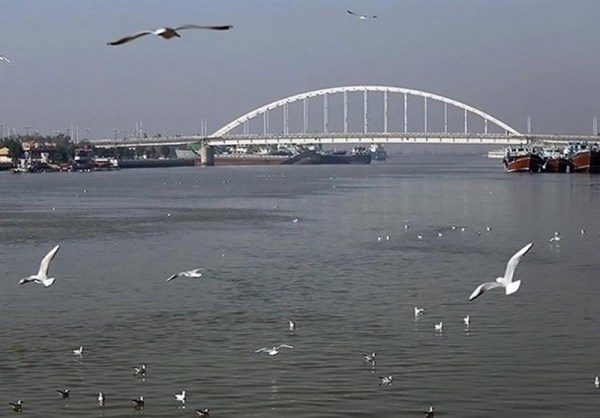
Karoon river
The Karun is the Iranian river with the highest water flow, and its only navigable river. It is 950 km (590 mi) long. It rises in the Zard Kuh mountains of the Bakhtiari district in the Zagros Range, receiving many tributaries, such as the Dez and the Kuhrang, before passing through the capital of the Khuzestan Province of Iran, the city of Ahvaz, before emptying to its mouth. into Arvand Rud.
The Karun continues towards the Persian Gulf, forking into two primary branches on its delta – the Bahmanshir and the Haffar – that join the Arvand Rud, emptying into the Persian Gulf. The important Island of Abadan is located between these two branches of the Karun. The port city of Khorramshahr is divided from the island of Abadan by the Haffar branch.
Juris Zarins and other scholars have identified the Karun as one of the four rivers of Eden (Gihon), the others being the Tigris, the Euphrates, and either the Wadi al-Batin or the Karkheh.
History
Karun River lies between the Susa plain, the location of the ancient cultures dating back to the fifth millennium BC and, to the south, the newly discovered ancient culture of the Zohreh River plain from the same period. The principal ancient site being excavated near the Zohreh River is Tol-e Chega Sofla, which has many parallels with Susa. Sites along the Karun also participated in these historical developments.
Later, the Karun valley was also inhabited by the Elamite civilization which rose about 2,700 BC. At several points in history, Mesopotamian civilizations such as Ur and Babylon overthrew the Elamites and gained control of the Karun and its surroundings in modern Khuzestan. However, the Elamite empire lasted until about 640 BC, when the Assyrians overran it. The city of Susa, near the modern city of Shush between the Dez and Karkheh rivers, was one of their largest before it was destroyed by the invaders.
The first known major bridge across the river was built by the Roman captives that included its emperor Valerianus in the Sassanid era, whence the name of the bridge and dam Band-e Kaisar, "Caesar's dam", at Shushtar (3rd century AD).
In two of several competing theories about the origins and location of the Garden of Eden, the Karun is presumed to be the Gihon River that is described in the Biblical book of Genesis. The strongest of these theories, propounded by archaeologist Juris Zarins, places the Garden of Eden at the northern tip of the Persian Gulf, fed by the four rivers Tigris, the Euphrates, Gihon (Karun) and Pishon (Wadi al-Batin).
In 1888, during a period of increasing British influence in southern Iran, Lynch Brothers opened the first regular steamship service on the river linking Khorramshahr and Ahvaz.
The name of the river is derived from the mountain peak, Kuhrang, which serves as its source. The famous silent film documentary, Grass: A Nation's Battle for Life (1925), tells the story of the Bakhtiari tribe crossing this river with 50,000 people and 500,000 animals.
